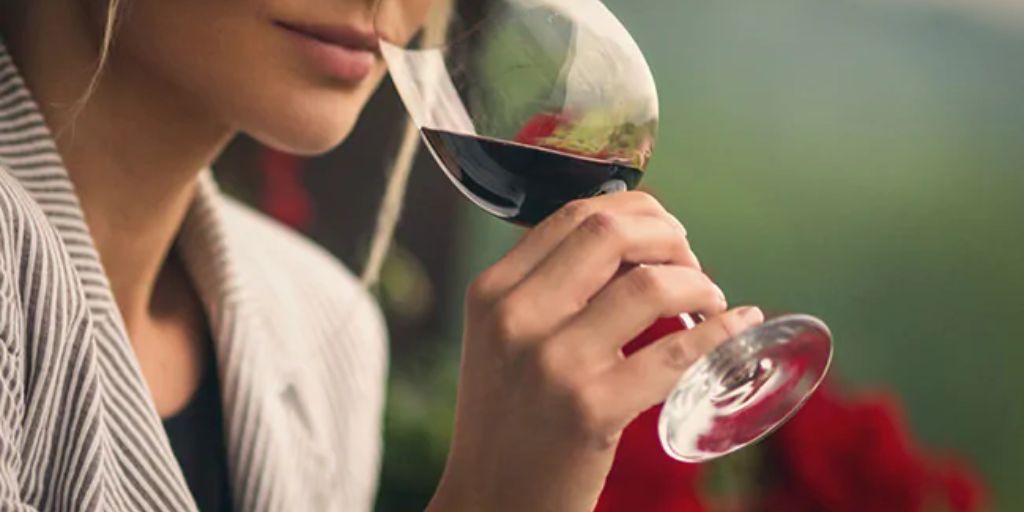Wine tasting can sometimes feel like stepping into a secret club with its own language, rules, and rituals. If you’ve ever stood in front of a glass of wine wondering where to start or worrying you’ll say the wrong thing, you’re not alone. The good news is that tasting wine doesn’t have to be intimidating.
In fact, it should be fun, simple, and a chance to discover what you really like. Whether you’re at a wine tasting event, dinner party, or just enjoying a bottle at home, here’s how to taste wine confidently and enjoy the experience without feeling overwhelmed.
1. Forget the Jargon—Trust Your Senses
One of the biggest barriers to enjoying wine tasting is the complicated vocabulary: notes of blackberry, hints of vanilla, full-bodied, tannins, acidity… It’s easy to feel like you need to be a sommelier to participate. The truth? You don’t.
Start by simply using your own words. What do you smell? Does it remind you of fruit, flowers, spices, or maybe something earthy? What flavors come to mind? Don’t worry about naming grape varieties or regions at first—just describe what you experience. Is it sweet, sour, bitter, or smooth? This personal connection is the core of wine tasting.
2. Look at the Wine First
Before you take a sip, spend a moment observing your wine. Hold your glass up to the light or against a white background to really see its color and clarity. Is it deep red, pale yellow, or something in between? The color can tell you a little about the wine’s age and grape variety, but mostly it’s a visual treat that gets you engaged.
Swirling your wine gently in the glass helps release its aromas and looks elegant—but you can just swirl casually. No pressure to make it perfect.
3. Take a Whiff—Really Smell It
Next, bring the glass to your nose and take a deep breath in. This is where you start to connect with the wine’s character. Try to pick out different scents. Some common aromas include:
-
Fruity: berries, apple, citrus
-
Floral: rose, jasmine, violet
-
Spices: cinnamon, pepper, vanilla
-
Earthy: mushroom, leather, tobacco
It’s okay if you don’t identify everything—sometimes a scent just reminds you of something personal like a holiday or a favorite dessert.
4. Take a Small Sip—And Let It Roll
Now, take a small sip and let the wine spread across your tongue. Don’t just gulp it down—try to notice how it feels and tastes. Is it light or heavy? Smooth or sharp? Sweet or dry? Are there flavors that stand out? Maybe you taste cherries, oak, or even chocolate.
You can even try a little “chewing” motion with your mouth open to aerate the wine and unlock more flavors. It sounds funny, but it really helps.
5. Pay Attention to the Finish
The finish is how long the flavor lasts after you swallow. Some wines leave a quick, light taste, while others linger for several seconds with more complex flavors. A long, pleasant finish usually means a well-made wine. Try to notice what flavors stick around.
6. Don’t Be Afraid to Compare
If you’re tasting multiple wines, try switching between them and noticing differences. You might find one wine is fruitier, another more spicy, or one feels heavier. This helps you start to understand your preferences and learn more about wine styles.
7. Ask Questions and Share Your Thoughts
If you’re at a tasting event or with friends, don’t hesitate to ask questions. Wine experts love sharing stories and tips. And when it’s your turn, share what you think in your own words. Everyone’s palate is different, and there are no wrong answers.

8. Keep It Casual—Wine Is for Enjoying
Remember, the goal of wine tasting is enjoyment. You don’t need to be an expert to appreciate a glass of wine. Sometimes the best way to learn is just to drink what you like and explore gradually.
Bonus Tips for a Relaxed Wine Tasting Experience
-
Use the Right Glass: A tulip-shaped glass works well for most wines because it concentrates aromas. But if you don’t have fancy glasses, no worries—any clean glass works.
-
Serve at the Right Temperature: Reds are best slightly below room temperature (about 60-65°F), whites and rosés chilled (45-55°F). This helps the wine show its best qualities.
-
Take Your Time: Don’t rush. Wine tasting is about savoring each step.
-
Have Some Water and Snacks: Water cleanses your palate between wines, and mild snacks like bread or cheese help reset your taste buds.
-
Write It Down: Keeping a simple journal of wines you try and what you liked (or didn’t) can be fun and helpful.
Wrapping Up: Wine Tasting Is for Everyone
The key to tasting wine without intimidation is to relax and trust your senses. Forget the pressure to know every technical term or impress others. Instead, focus on how the wine makes you feel and what flavors you enjoy. Wine is a wonderful, social, and cultural experience meant to be savored at your own pace.
Next time you have a glass of wine, try these simple steps and watch your confidence grow. You might find that wine tasting isn’t a mystery after all—it’s just a fun way to connect with new flavors and moments.
Cheers to tasting wine your way!


